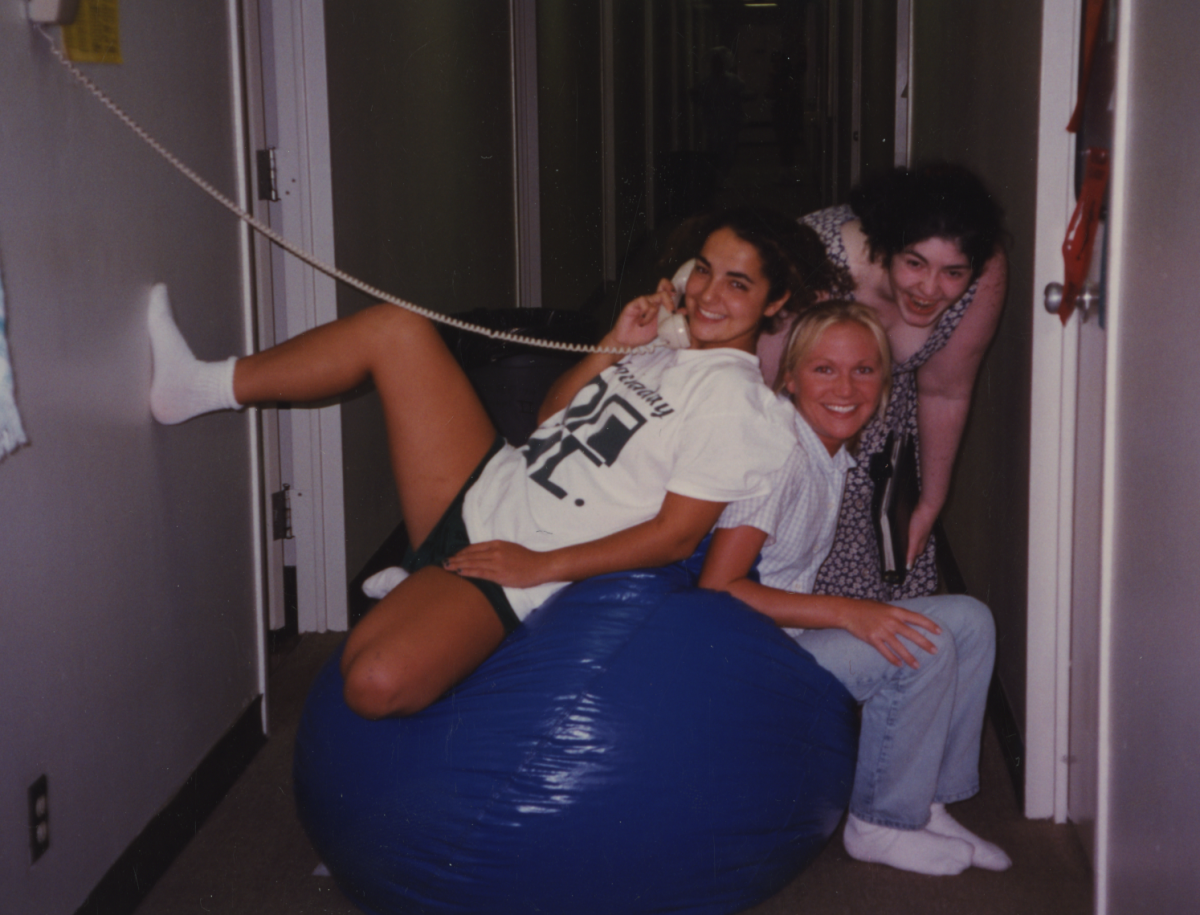TIME MAGAZINE ANNOUNCED THEIR 2017 PERSON OF THE YEAR ON DEC. 6: “SILENCE BREAKERS.” IT HONORS THOSE CELEBRITIES AND PUBLIC FIGURES WHO TOOK A STAND AGAINST THEIR ABUSERS WHEN NO ONE WOULD, RIDING OFF THE #METOO REVOLUTION. THESE MEN AND WOMEN SHARE A SIMILAR STORY OF LIBERATION, DOUBT AND PAIN, AS THEY TESTIFY AGAINST THEIR ABUSERS AFTER MANY YEARS OF SILENCE.
In the past 11 weeks since the bombshell article for the New York Times on Oct. 5 hit, revealing Harvey Weinstein’s past of sexual assaulting many women throughout his illustrious career, many allegations against former movie producer hit the headlines. Dozens of men in the spotlight have been outed since, for various forms of sexual misconduct and the list keeps growing every day. Some celebrity silence breakers include Taylor Swift, Ashley Judd, Wendy Walsh, Megyn Kelly and Isabel Pascual.
These victims are from fields such as government, sports, journalism, the business world, medicine, and many more. The United States Department of Justice estimates that of 63 percent of sexual assaults are never reported to the police because of the scrutiny and barriers victims encounter if they do come forward. However, in wake of Weinstein’s allegations, women across the world are taking this risk in spite of the inevitable backlash and doubt.
Republican Senator Roy Moore, actor Kevin Spacey, former Fox News host Bill O’Reilly, comedian Louis C.K., former Today Show host Matt Lauer and journalist Charlie Rose are just a few of the men whose secrets have been exposed and careers destroyed in the last two months.
CNN describes this as “The Weinstein Effect.”
Upper School History Teacher Tracy Walder sees the movement starting with Weinstein as well.
“I would say you had this one person really open the floodgates. It seems like there is a new scandal every day now,” Walder said
But sexual assault is not just a problem with the high and mighty, such as politicians and celebrities, in today’s society. “Sexual assault cannot just be a topic when you can sensationalize it. One of the downfalls of this movement is that from a lot of men, and women too, it has been ‘celebrities do bad things’,” senior Maye McPhail, a former fan of the disgraced Dallas Clayton said. “I haven’t been made into an acknowledgment that it is all men, even the ones I know and believed to be good people do bad things.”
THE FACTS OF THE MATTER
In such a progressive climate, women still have different reasons that prevent them from coming out with their experiences.
 “People get worried about what the ramifications for them are going to be. You know we have Trump who theoretically talked about sexual assaulting a woman and we still voted him president,” Walder said. “I guess our society finds that acceptable or they are willing to look past it.”
“People get worried about what the ramifications for them are going to be. You know we have Trump who theoretically talked about sexual assaulting a woman and we still voted him president,” Walder said. “I guess our society finds that acceptable or they are willing to look past it.”
Women face losing their jobs, destroying relationships and receiving harsh social stigma, if they come forward with their allegations. This allows their abusers to continue their behavior for years and even decades later. Associate Professor of Sociology at Southern Methodist University Anne Lincoln speaks to this.
“There is plenty of social stigma when women come out,” Lincoln said. “People jump on them and question their credibility.”
As well as the potential outcomes women face, many see their situation as “boys being boys” or an inevitable consequence of their job.
“No one should have to face that. It is not part of the job. That is ridiculous,” Walder said.
Sexual assault, harassment and misconduct are a prominent part of rape culture, ingrained into society through years of sexism in the workplace. Sexual assault and the outpour of allegations is not a single watershed moment.
“This issue is like a tapestry that has played out for a long time,” Lincoln said. “[There is] a culture where men can treat women poorly.”
Many times, women are not believed in a court setting, hindering more victims from reporting their allegations. In an interview with the New York Times on Nov. 30, Kimberly A. Lonsway, the research director of End Violence Against Women International, said “The public and the police vastly overestimate the incidence of false reports: the most solid, case-by-case examinations say that only five to seven percent of sexual assault reports are false.”
According to journalist Shaila Dewan’s article in the New York Times about the reasons why people doubt sexual assault victims, the most common reasons in court setting range from a foggy memory of the incident, usually a result of alcohol or drugs, to the victim remaining friends with his or her abuser. Especially in the entertainment industry and the allegations against Harvey Weinstein earlier last month, many women who accused him of sexual assault remained in contact with him long after their abusive events.
“Victims think that it was their fault, so in many cases they want continued contact,” said Roderick MacLeish, a Boston lawyer who has represented hundreds of victims of abuse by Catholic priests and school teachers, in an interview with the New York Times.
In many cases as well, the women have no choice but to remain in a friendly relationship with their abusers, such as instances relating to bosses and family members. Many women also don’t come forward right away, which can spark doubt in a court setting. Leigh Corfman, a victim of sexual assault at 14, did not come forwards with her allegations against Roy Moore, an Alabama Republican candidate for the Senate, for over four decades.
Afraid of the ramifications and how it would affect her family, Corfman eventually admitted to The Washington Post that not coming out against Moore “has cost me.”
While some women wait for the most opportune time to come out with their stories, some victims don’t even understand that what happened to them was a violation until years after. This is usually related to a close relationships with their abuser, such as a family member or a friend. Confusion and self-blame
are common with some victims. Scott Berkowitz, president of RAINN, or the Rape, Abuse and Incest National Network, said in a November 30th interview with The New York Times, “A lot of people who
call the national hotline, one of the first questions they ask is, ‘Was I raped?’”
Many abusers use manipulation and shame to prevent their victims from coming forward. By accusing the women, and in some cases men, that their consent was present and disguising their actions with humour or sarcasm, some women don’t know where to draw the line between sexual misconduct and normal office behavior.
Lincoln feels that coming forward is a critical thing.
“You shouldn’t speak up unless you want to, but people should encourage you to come forward. It is great that they are feeling comfortable now because they didn’t feel comfortable for a long time,” Lincoln said. “There is strength in numbers. It’s just critical math that if more people come forward it is better.”
RIPPLING AROUND THE WORLD
Across the globe, women are responding to this new development of solidarity against sexual assault perpetrators.
According to the United Nations, 35 percent of women globally have experienced physical or sexual violence and 120 million girls have experienced forced sex or other acts. With staggering statistics like these, one can see the extent of this problems, reaching far beyond
the United States. All around the world, women are also using the #MeToo hashtag to bring this previously taboo topic into conversation.
According to Twitter, in the first week of this movement, 1.2 million people, 300 thousand of them being men, tweeted, sharing their experiences of sexual assault or sexual harassment.
In Sweden, Denmark, Norway, Canada and the United States, the hashtag has appeared on Twitter the most.
France has made it its own by tweeting #BalanceTonPorc, or #NameYourPig. This open discussion of a previously hushed topic led to widespread demonstrations in Paris and across France on Oct. 29. Additionally, individuals in Spain and Latin America are using #YoTambien to unify their voices.
HITTING HOME
After she followed and interacted with children’s book author and well-known artist Dallas Clayton via instagram since 2015, senior Maye McPhail has become a fan of his art as well as the message it promotes. When he announced he would be embarking on a national mural tour, sponsored by Instagram’s ‘Kind Comments Campaign’, and coming to Dallas to paint in Deep Ellum on Sept. 29, he invited his fans to come paint with him.
“When I met him I thought he was totally wonderful. His whole little schtick was getting to know you very well right at first I guess,” McPhail said. “While we painted we talked about my poetry and ambitions. He was really encouraging and I honestly thought he was wonderful. He definitely fit the personality of his art. There was no red flags. We gave each other hugs and took pictures.”
However, Dawn Batson, a former friend of Clayton’s, has claimed to have heard from several other Clayton victims, many of whom are afraid to speak publicly for fear of reprisal, according to The New York Post and Buzzfeed.
Batson told several friends about the alleged rape in the days and months following the attack, but decided to speak publicly and file a police report, amid the current cultural phenomenon of sexual assault and harassment victims speaking out, she told BuzzFeed. As a result, many articles painting Clayton in a positive light include Editor’s notes about the allegations and redact any affiliation with him.
On the other hand, the shoe company Vans has discontinued Clayton’s sneakers he designed for the company and many of Clayton’s murals across the country have been removed within days of the allegations.
While only weeks before she was being interviewed for his documentary, once-fan McPhail has been a player in dismantling his career. After first hearing about the allegations and confirming her belief in them through gathering all the information, McPhail felt a sense of duty. She had brought friends to the mural painting, posted about him positively on her Instagram and spoken highly of him to many of her friends
“I couldn’t excuse myself from speaking out against him. I had just been a big supporter of his, so that just left me thinking what kind of person would I be if I didn’t support these women coming out against him as strongly as I supported him,”McPhail said. “I knew that I helped put that mural up and I would help take that mural down.”
Immediately, McPhail emailed the real estate company owning property rights to the wall, and within two hours, she received an email that the wall was to be painted over within the next two days. She also got her friends in Washington D.C. and Chicago to call companies that owned the walls his art was displayed on in these cities and asked them to paint over it.
“It is really eye-opening to realize that the problem is much more widespread. It makes me realize it is less of a cultural thing and more of a bad people thing,” McPhail said. “I met Dallas Clayton, and he does not fit the stereotype of a bad guy. He has good things about him for sure and I still really appreciate all his art has done for me over the years, so it has forced be to reckon those two ideas.”
WITH GREAT POWER COMES GREAT MISCONDUCT
With sexual misconduct so rampant with men and women in high positions of power, a connection between power and assault has naturally been drawn.
According to Daniel Goleman with The New York Times, when looking at sexual harassment in a professional setting, research has found that men and women are looking for power over their victims, rather than lust or sexual satisfaction. It is a way to keep women “in their place.”
Dr. John Gottman, a psychologist at the University of Washington, said in an interview with The New York
Times in 1991, “harassment is a way for a man to make a woman vulnerable.” Sometime being seen as the abuser’s romantic awkwardness or social ineptness, these instances are completely the antithesis. These interactions are an assertion of power. “If there is a position of power, people will always try to contract sexual concessions,” SMU’s Professor Lincoln said. Used as a tactic to control or frighten women, most sexual harassment cases are seen in workplaces where the victims are new to the environment, the minority or whose job is traditionally held by men. A study of 100 women completed in 1989 at a U.S. factory, found that those women who hold positions that are seen as “masculine,” such as mechanics, where sexually harassed a substantial percent more than the women who worked the assembly line, a job characterized as “women’s work.”
“Men see women as invading a masculine environment,” Dr. Louise Fitzgerald, a researcher for the experiment said.
“These are guys whose sexual harassment has nothing whatever to do with sex. They’re trying to scare women off a male preserve.” Usually, men from blue-collar settings with lower than a high school education find crude ways to assert their dominance, sometimes placing sexual items in a women’s desk. On the other hand, those in a more corporate setting find more subtle ways to show their dominance over women, such as curt comments on their appearance or slipping sexual innuendos in daily conversation.
While it is mostly men the ones who assert their dominance over their female coworkers, men themselves are also the victims of sexual misconduct in the workplace, although generally less researched. But men and women sometimes have different definitions of sexual misconduct as revealed in a phone interview of 1,000 men and women conducted in Los Angeles, Dr. Barbara Gutek, a psychologist at the Eller College of Management.
The survey found that 67 percent of men said they would be complimented if they were propositioned by a woman at work compared to 17 percent of women who said they would be complemented. This can be a result of poor education or a denial concept in habitual abusers. McPhail now realizes the magnitude of this issue.
“Months ago I was ready to say – ‘wow’ – Hollywood has a problem. Seeing this though made me realize that all industries have a problem with rape and sexual assault,” McPhail said.
HOW TO PREVENT IT
In such a time period, with sexual misconduct rampant in the workplace, talking to your friends, child, parents or staff about sexual harassment or assault is pertinent.
According to an article with Stop it Now, an organization started to prevent child sexual abuse, when talking to your children or siblings about the subject, you should use concrete examples, talk about healthy boundaries and be approachable.
Another key factor, according to the same article, is defining the types of sexual misconduct, whether it is verbal harassment,cyber harassment, physical harassment, non-verbal harassment and/or unwanted behavior. But it is also important to mention and explain the different forms of love found in healthy relationships.
As well as having this discussion in the household, it is just as important in the workplace between employers and employees. This is not the only duty that the employer should follow, though.
In an article for The Balance, Susan M. Heathfield, a human resources expert who has written extensively about creating forward-thinking workplaces, said addressing sexual misconduct in the workplace, the employer should make it clear that this is a workplace where harassment will not be tolerated. As well as defining the term as a whole, they should provide education and information about harassment to all staff on a regular basis.
If anything were to occur in the workplace, they should promptly investigate and deal with all complaints of harassment appropriately discipline employees who harass other employees and provide protection and support for the employees who feel they are being harassed.
As well as the responsibility of the employer, the employee should also follow steps such as, understanding the definition, observing for possible threats, confronting those who do not follow the policy guidelines and supporting those who have been affected.
“It sucks that it is a women’s movement and it sucks that it is perceived as a liberal movement. It affects both parties. It affects all genders,” McPhail said. “ It is not something you can peg on other people. It’s not just those old guys it Hollywood. It’s young, positive, millennial artists, it’s not just boys in frats, its people everywhere.”
If you or someone you know has been sexually assaulted or experienced sexual misconduct call 800.656.HOPE (800.656.4673) or go to rainn.org for more information.
Story by Emily Fuller, A&E Editor, and Paige Halverson, Castoff Editor
Illustrations by Emily Baschab













